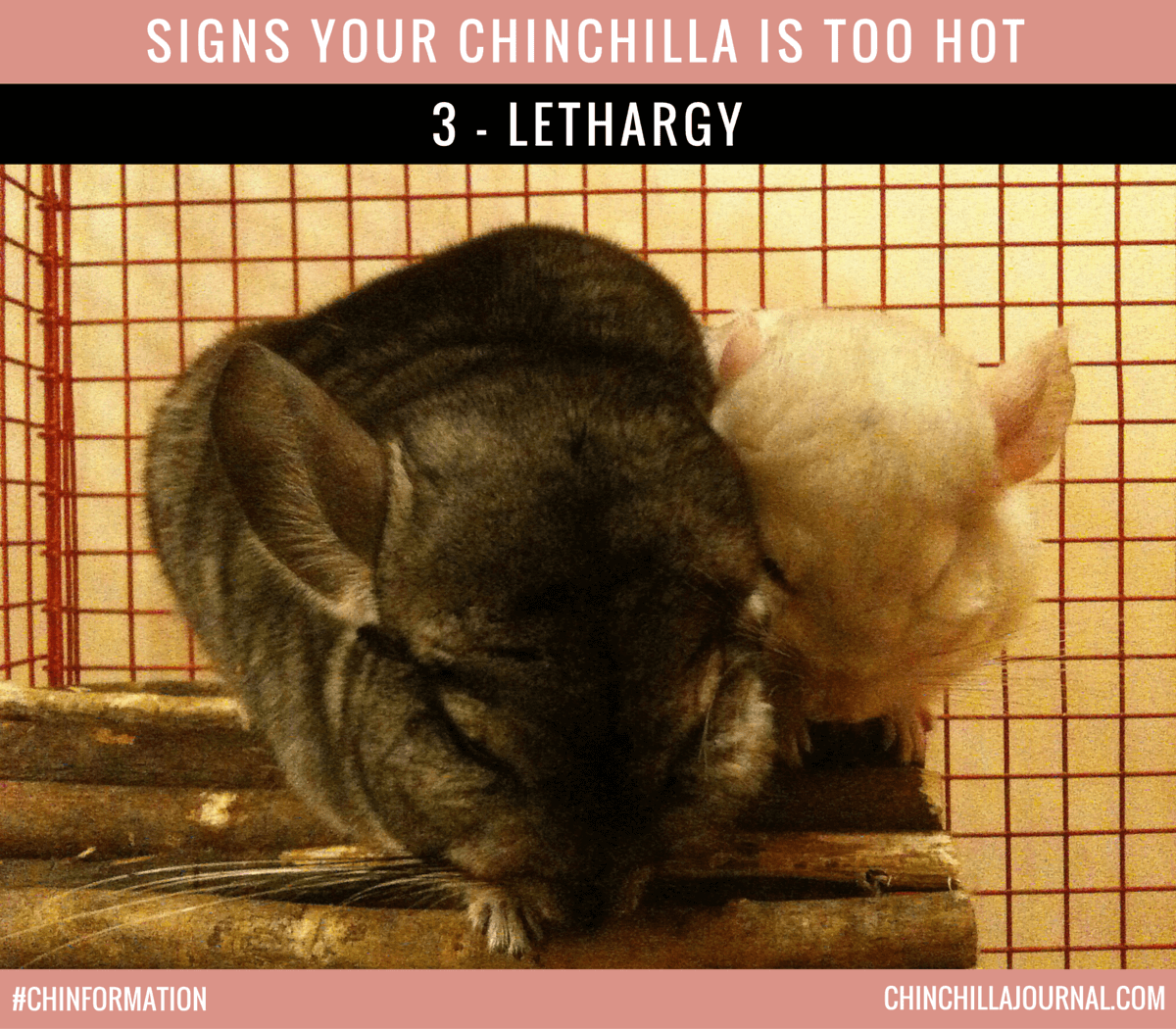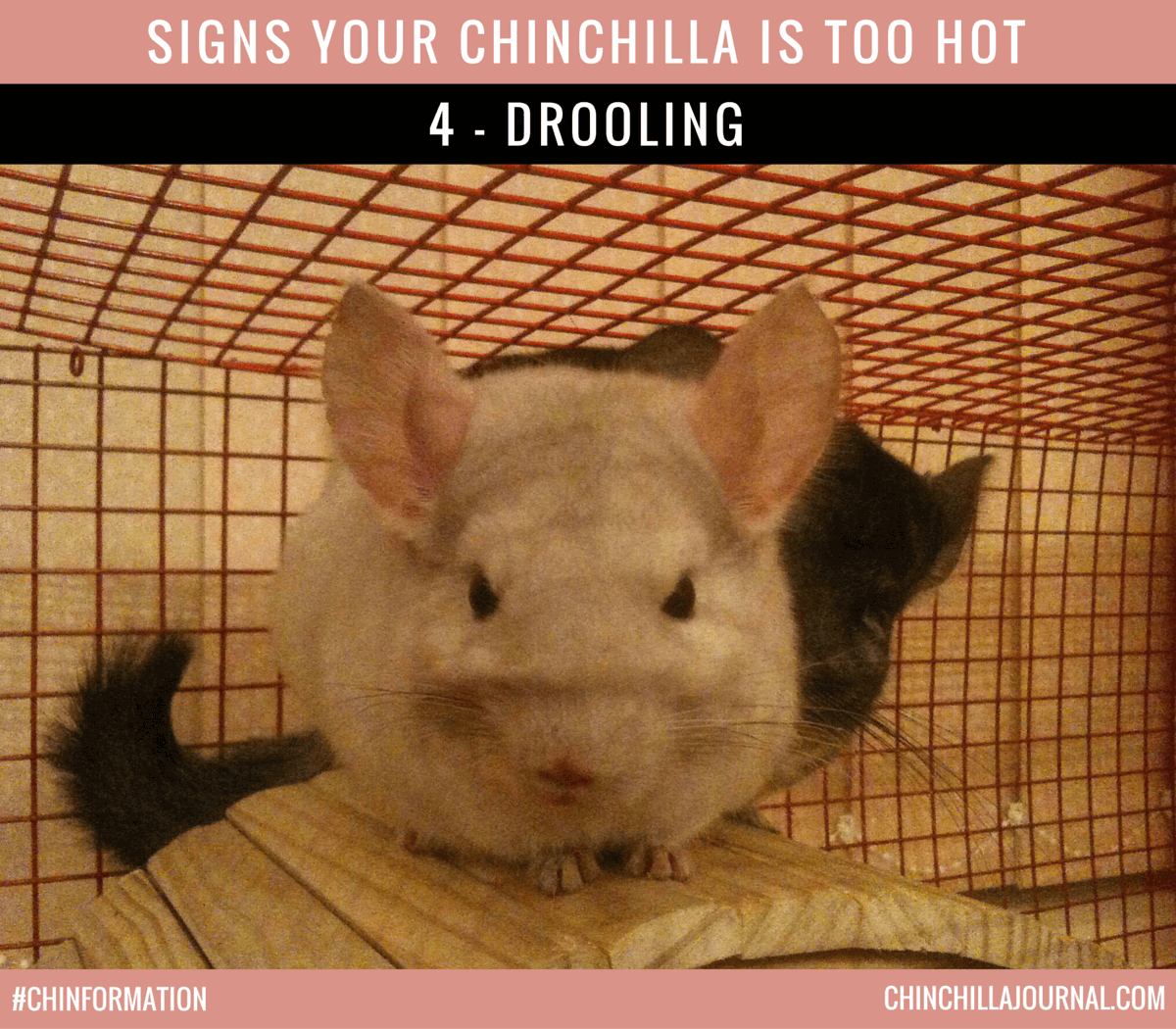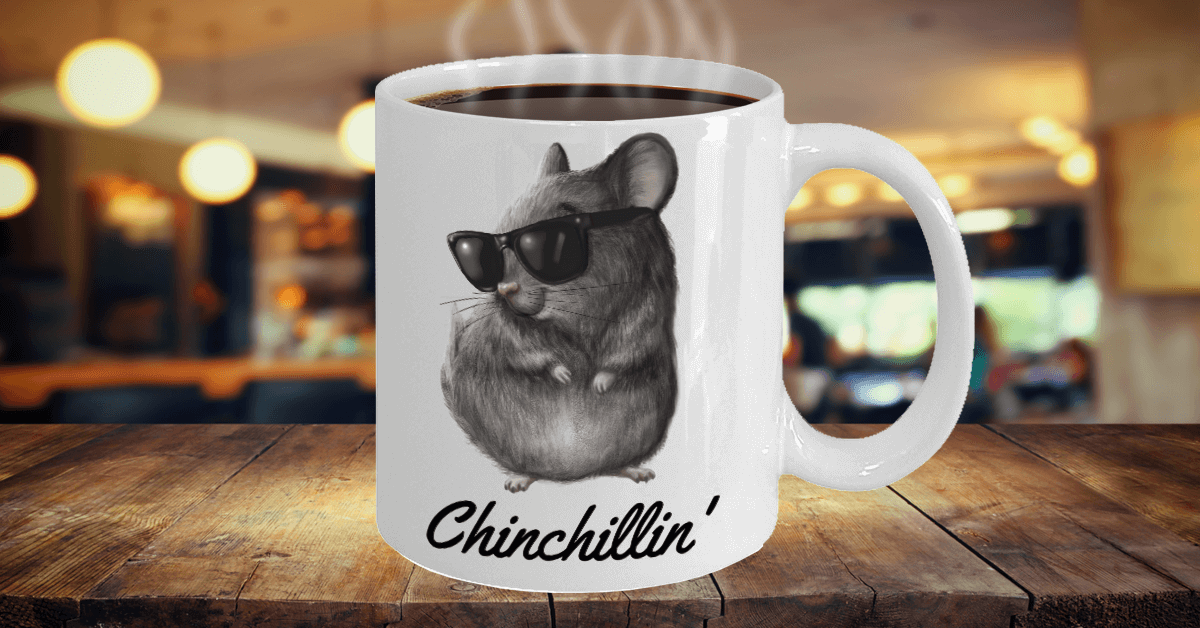
One thing I’ve noticed when I speak to chinchilla owners is that a lot of you don’t know how to tell if your chinchilla is too hot or even what the ideal temperature for your little fluffball is.
I live in an area where the temperature almost always stays in a safe range for chinchillas – between 60°F and 75°F (15.5°C and 25°C), so fortunately, I don’t have to worry about my chinchillas overheating.
However, I know that a lot of you live in places where the temperature goes above 75°F during the summer, or even all year round, and in this environment, your chinchilla could overheat.
So, in this post I want to help you keep your chinchilla safe and comfortable during the hottest times of the year, by sharing the main signs they could be too hot.
Remember, these are only indicators and are not definite signs that your chinchilla is overheating. However, if you notice any of these signs, you should contact an exotic vet for further advice.

(Don't worry, her ears weren't actually this red when I took the photo. I added the color to the photo for effect, so you can see what to look out for in your chinchilla's ears.)
Bright red ears are the most obvious sign your chinchilla might be too hot. If you notice their ears are red, take a closer look at the blood vessels in their ears for any signs of swelling which is another indicator that they may be overheating.
Sometimes after an intense play session your chinchilla’s ears will go red for a few minutes. However, if they stay red for longer than 10 minutes, they might be too hot and you should get in touch with an exotic vet for further advice.

If your chinchilla’s body feels warmer than usual, this is another sign they could be overheating.
Chinchillas will sometimes feel warmer than normal if they’ve been very active. However, if your chinchilla’s body stays warm for longer than 10 minutes, they may be too hot and you should speak to an exotic vet for advice.

Chinchillas are normally lethargic during certain times of the day and they do love to sleep and snuggle.
However, if you notice your chinchilla is a lot less active than usual, they may be overheating and you should get in touch with an exotic vet for their opinion.

(I don't have any pics of my chinchillas drooling but if your chinchilla is drooling, you'll be able to see and feel the wetness around their mouth.)
Wetness or stringy saliva around your chinchilla’s mouth is another sign that they might be too hot.
Chinchillas don’t naturally drool, so if you see them drooling, you need to contact an exotic vet for advice.

If your chinchilla is taking noticeably deeper and heavier breaths than usual, they could be too hot.
They will sometimes breathe heavily for a few minutes if they’ve been very active during a play session. However, if your chinchilla’s breaths don’t return to normal within 10 minutes, they may have overheated and you should speak to an exotic vet for further advice.
After you’ve spoken to an exotic vet and your chinchilla has returned to a safe temperature, read the post below for some tips on keeping your chinchilla’s environment cool and preventing future overheating…
> 10 Ways To Keep Your Chinchilla Cool In Hot Weather
Are there any others signs you use to see if your chinchilla is too hot? What are your best tips for keeping chinchillas cool? Leave a comment and let me know.



